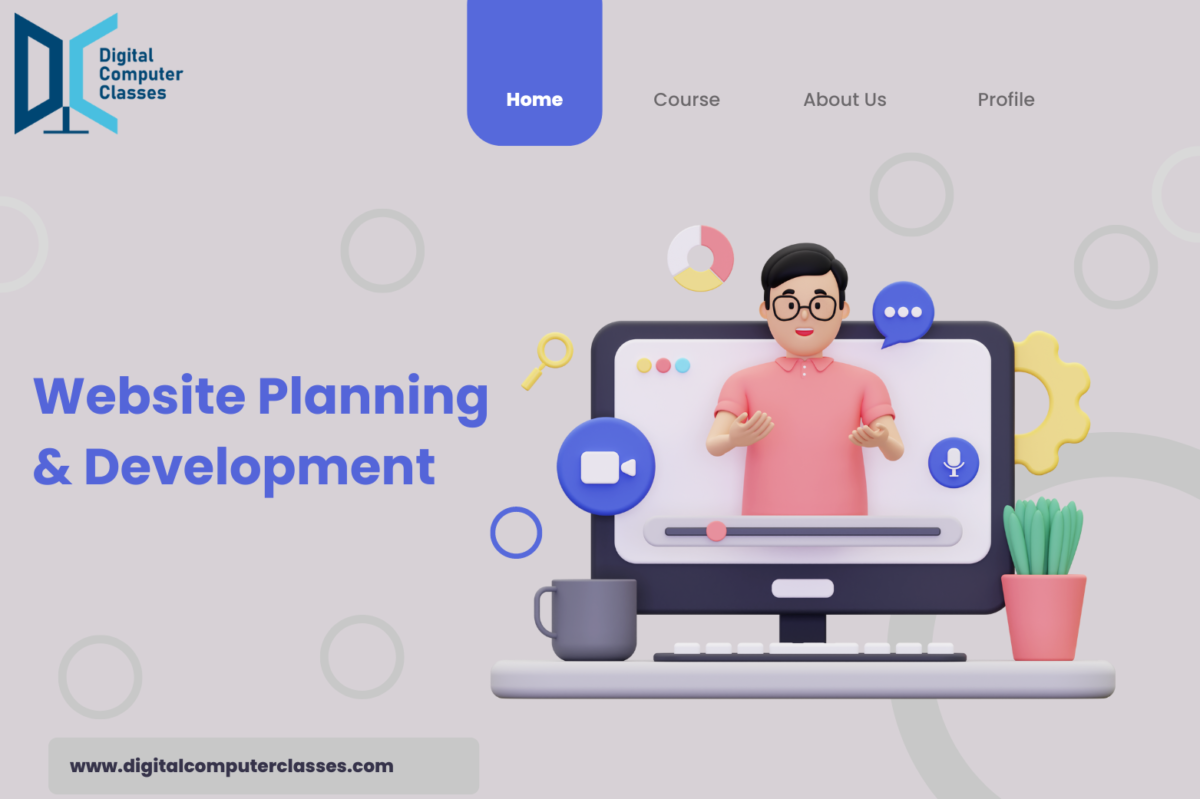Web design is not just a beautiful and well-functioning website; it is the process of designing and developing a website that achieves the company’s objectives while offering optimal usability to the user. Below are ten points that will help to organize your work, as well as properly plan and analyze the website:
Determine goals and objectives
As any project begins, it’s always critical to reestablish the project’s objective before going to its design and development. Some expected outcomes may be to enhance company visibility, generate leads, make sales, offer customer service, etc, or to position the company as a thought leader. The objectives should be set bearing in mind the SMART criteria which include Specific, Measurable, Achievable, Relevant, and Time-bound.
Understand Your Target Audience
User-oriented approach is highly valuable for creating higher-performing websites, and understanding the audience and its needs is the first step to making that happen. Analyze the target market, this would involve; • Collect the demographic characteristics, age, sex, geographical location, and income level of the target market. It is important to create user profiles that would embrace all the segments of users and draw user paths or scenarios.
Perform a Competitor Analysis
Studying competitors’ websites gives a good idea of the existing and unfulfilled benchmarks in the industry. I should look at what they look like, what they say, how they are organized and linked, their SEO approaches, and their appeal to the public. Take note of the beneficial characteristics and the drawbacks of this website and apply the knowledge to your site.
Plan Your Website Structure
Having a good structure for a website is important for both, usability and SEO issues. Develop a clear site map that would show the focal pages and additional pages in the best logical structure. This assists the users in finding what they are looking for within the site and search engines in a proper method of indexing the content.
Develop a Content Strategy
Text remains the foundation of any Web site which delivers information and services to consumers. Decide the kind of content you intend to develop (for example blogs, channels, graphics) and its layout. Conduct a content inventory to know the kinds of content that are lacking and those that meet the needs of the users and companies. Always ensure that content is up to date and can be recycled to have new content regularly.
Design for User Experience (UX)
Accessibility layouts guarantee the improvement of a general flow, making dwell time longer and engagement higher. Stress continuity, strong ‘buy’ buttons, and an appealing design and structure. The layout of the site can be influenced by the look and feel of the template used in the creation of the sites, this therefore calls for consideration of accessibility standards to enhance the usability of the site for the physically challenged persons.
Optimize for Mobile
The more people prefer using their mobile devices, the more important is to make sure your website is 100% responsive. Responsive design makes the website look good on any device, both on the mobile and the desktop. This also helps to boost your SEO ranking or your place on the list of results that appear on the internet.
Implement SEO Best Practices
SEO stands for search engine optimization which is a critical factor in enhancing the ranking of your website on the search engines. Keywords research to review for the terms your target group is searching for. The keywords most used should be incorporated in the Meta tags, headers, URLs, and content of the web page. Make sure your site has a fast loading time and what’s more, it should be a mobile-optimized site.
Plan for Technical Considerations
Some technical tasks related to website planning are selecting a reliable hosting provider, using SSL certification for security issues, and website compatibility for different browsers. Be on the lookout for such metrics as page speed as Google PageSpeed Insight can assist in managing it.
Test and Iterate
Upon designing your website, see that you perform tests to ensure that it meets the necessary quality before you launch it to the public. These form the main tests to be conducted; usability tests involving real users, comparative tests where different aspects of the site’s design are compared, and finally performance tests with a view of determining optimal and faster performance. Ideally, it’s good if after launching the app, you can get feedback and analyze the interaction of users to make constant updates.
Conclusion
Web planning and analysis share a simple but multi-faceted approach that cannot be limited to any specific section but ranges from gathering business objectives and target users to methodological and developmental aspects and ongoing optimization. The ten steps outlined above therefore deal with the most important elements that go into the construction of a website that serves a given business and one that is user friendly. Therefore, the strategic planning and analysis phase is essential in preparing the ground all the planning for your website so that it is organized well and is responsive to the users and search engines.

